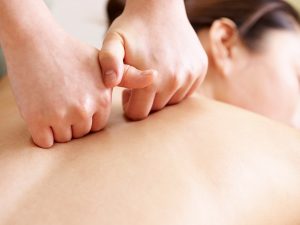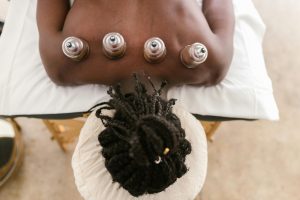In the realm of alternative therapies for pain relief, Tuina massage stands out as an effective and natural method. Rooted in Traditional Chinese Medicine (TCM), Tuina massage has been used for centuries to alleviate various types of pain, promoting healing and overall well-being. This article explores the benefits and techniques of Tuina massage for chronic pain. Tuina massage, also known as Tui Na or Chinese therapeutic massage, is a hands-on healing practice that combines various techniques such as acupressure, stretching, and deep tissue manipulation. It is based on the principles of TCM, which views the body as a complex system of meridians and energy flow.
One of the key concepts in Tuina massage is that pain is often caused by blockages or imbalances in the body’s energy channels. By applying specific techniques and pressure to these channels, the therapist aims to restore the flow of energy, relieve pain, and promote overall healing.
Tuina massage is particularly effective in managing chronic pain conditions. Whether you are suffering from back pain, neck and shoulder tension, arthritis, or sports injuries, Tuina massage can offer natural and drug-free pain relief. The therapeutic techniques used in Tuina massage help to release muscle tension, reduce inflammation, improve blood circulation, and stimulate the body’s natural healing response.
Moreover, Tuina massage is more than just a physical treatment. It also addresses the emotional and mental aspects of pain. TCM believes that emotions can play a significant role in the manifestation of physical pain.

Tuina massage
Tuina, also known as Tui Na, is a therapeutic form of bodywork that originated in ancient China. It is based on the principles of TCM and focuses on manipulating the body’s energy, known as Qi, to restore balance and relieve pain. Unlike other massage techniques, Tuina involves a combination of pressing, kneading, stretching, and joint manipulation, which target specific acupoints and meridians along the body.
Tuina massage employs various techniques to alleviate pain and promote healing. Firstly, it enhances blood circulation and stimulates the flow of Qi throughout the body. This helps to remove blockages and reduce inflammation, providing relief from pain and stiffness. Secondly, Tuina massage triggers the release of endorphins, the body’s natural painkillers, promoting a sense of relaxation and well-being.
A study published in Trials Journal demonstrated the efficacy of Tuina massage therapy in providing relief for patients with chronic neck pain. The study found that Tuina massage therapy significantly reduced pain intensity and improved overall neck function compared to a control group. The researchers attributed these findings to the combination of targeted manipulation of specific acupoints and meridians, which helps to alleviate muscle tension, improve blood circulation, and reduce inflammation. This highlights how Tuina massage therapy can be a valuable tool in managing chronic neck pain and supporting overall well-being (Trials Journal).
Tuina massage is often used to manage chronic pain conditions such as:
1. Back and Neck Pain: Tuina helps to alleviate muscle tension and improve spinal alignment, reducing pain in the back and neck regions.
2. Arthritis: By stimulating acupoints around affected joints, Tuina can reduce inflammation, relieve pain, and improve joint mobility in arthritis patients.
3. Headaches and Migraines: Tuina techniques applied to acupoints on the head, neck, and shoulders can effectively reduce the frequency and intensity of headaches and migraines.
4. Sports Injuries: Tuina is widely used in sports medicine to enhance athletic performance, relieve muscle strain and sprains, and speed up recovery.
Tuina massage is generally safe and suitable for most individuals, regardless of age or fitness level. However, it’s important to consult a qualified TCM practitioner before undergoing Tuina treatment, especially for individuals with certain medical conditions or during pregnancy.
Tuina massage has been recognized as an effective therapy for a wide range of individuals. According to a study published in the journal Frontiers in Neuroscience, Tuina has shown promising results in alleviating pain and promoting overall well-being. The study found that Tuina massage not only activates the body’s natural pain-relieving mechanisms but also improves blood circulation and reduces inflammation. The targeted manipulation of specific acupoints and meridians in Tuina helps relieve muscle tension and promotes relaxation. This makes Tuina suitable for most people, regardless of age or fitness level, as a safe and effective therapy for pain relief (Frontiers in Neuroscience).
Tuina (pronounced “twee-nah”) is a form of Chinese therapeutic massage that dates back over 2,000 years. The name “Tuina” translates to “push” and “grasp,” which describes the techniques used in this therapy. It involves a combination of massage, acupressure, and manipulation of the body’s soft tissues to balance the flow of Qi (vital energy) and promote healing (ECON Chinese Medicine) (Advanced Women’s Health Clinics).
Tuina is based on the principles of Traditional Chinese Medicine (TCM), which views the body as a holistic system where the flow of Qi is essential for maintaining health and well-being. According to TCM, when Qi is blocked or imbalanced, it can lead to various physical and emotional ailments, including pain.
During a Tuina session, the practitioner uses their hands, fingers, elbows, and sometimes even tools, to apply pressure, knead, and stretch the body’s muscles and soft tissues. The techniques used in Tuina can include rolling, pressing, and grasping actions, as well as rhythmic tapping and stretching movements. These actions are designed to target specific acupoints and meridians throughout the body, which are believed to correspond to different organs and bodily functions.
By applying pressure to these acupoints and manipulating the body’s soft tissues, Tuina aims to restore the balanced flow of Qi and blood, which is believed to be crucial for optimal health. The practitioner may also use various herbal liniments, ointments, or herbal compresses during the session to enhance the therapeutic effects of the massage.
Tuina targets specific acupressure points and meridians in the body to remove blockages and enhance the flow of Qi and blood. This helps to reduce inflammation, relieve muscle tension, and improve circulation, which are crucial for alleviating pain (Singapore Paincare TCM Wellness) (Singapore Paincare TCM Wellness). Here are some of the primary ways Tuina can help with pain relief:
1. Stimulating Endorphin Release
Tuina has been found to stimulate the release of endorphins, the body’s natural painkillers. Endorphins help to reduce the perception of pain and create a feeling of well-being (MedicinEvolution).
2. Reducing Inflammation
Research suggests that Tuina can reduce inflammation in the body by applying specific pressure techniques. This is particularly beneficial for conditions such as arthritis and other inflammatory diseases (MedicinEvolution).
3. Improving Blood Circulation
Tuina promotes better blood circulation and lymphatic flow, enhancing the body’s ability to deliver nutrients and oxygen to cells while removing waste products. This improved circulation helps to alleviate pain and support healing (Advanced Women’s Health Clinics).
Tuina is versatile and can be used to treat a wide range of pain conditions. Some of the most common include:
For enhanced pain relief, Tuina is often combined with other TCM treatments such as acupuncture, cupping, and herbal medicine. This integrative approach helps to address the root causes of pain and provides comprehensive care (ECON Chinese Medicine) (PULSE TCM).
Acupuncture involves inserting fine needles into specific acupoints to stimulate the body’s healing response. When used alongside Tuina, it can enhance the effects of pain relief by improving Qi flow and reducing inflammation (Singapore Paincare TCM Wellness).
Cupping therapy uses suction cups to draw out toxins and improve blood flow. It complements Tuina by further reducing muscle tension and promoting relaxation (PULSE TCM).

cupping
Chinese herbal medicine can be used to support the body’s healing process from within. Herbs are selected based on the individual’s condition and help to balance the body’s internal environment, making Tuina more effective (ECON Chinese Medicine).
Modern research supports the effectiveness of Tuina for pain relief. Studies have shown that Tuina can stimulate the release of endorphins, reduce inflammation, and improve circulation. Additionally, it may influence gene expression related to immune function and pain modulation, indicating its potential for deeper physiological impacts (MedicinEvolution).
Tuina massage is a powerful tool in Traditional Chinese Medicine (TCM) for managing chronic pain. It stimulates endorphin release, reduces inflammation, and improves blood circulation, making it effective for various pain conditions. Whether you are dealing with musculoskeletal pain, chronic conditions, or sports injuries, Tuina can provide significant relief and improve your overall quality of life.
Tuina takes a holistic approach to pain management, addressing both symptoms and underlying causes of pain. By manipulating specific acupoints and meridians, Tuina restores balance and promotes natural healing. Combined with acupuncture, herbal medicine, and qigong exercises, Tuina offers even greater benefits, providing a comprehensive approach to pain relief.
Safe and non-invasive, Tuina can be used alongside conventional medical treatments. However, it is important to consult with a qualified TCM practitioner who can customize the treatment to your needs.
By incorporating Tuina into your pain management plan, you can experience the benefits of this ancient therapy, move towards a pain-free life, and improve your overall quality of life.
If you want to delve deeper into the world of Tuina and gain a comprehensive understanding of this ancient therapy, exploring the CCATCM’s website is a great place to start. Their website provides valuable information about Tuina, including its benefits and how it is used in traditional Chinese medicine. Additionally, if you are interested in learning Traditional Chinese Medicine, CCATCM offers the Tuina – TUNA 1201 course which is the perfect opportunity to acquire the skills and techniques of tui na/an mo, gua sha, and cupping. This course focuses on both the theoretical basis and practical application of these therapies, ensuring that students can effectively use them for therapeutic purposes.
To find out more about this course and other Tuina offerings available, you can visit CCATCM’s website at https://cctcm.ca/tuina/ for detailed information and enrollment options. Take a step closer to mastering Tuina and enhancing your knowledge of traditional Chinese medicine.